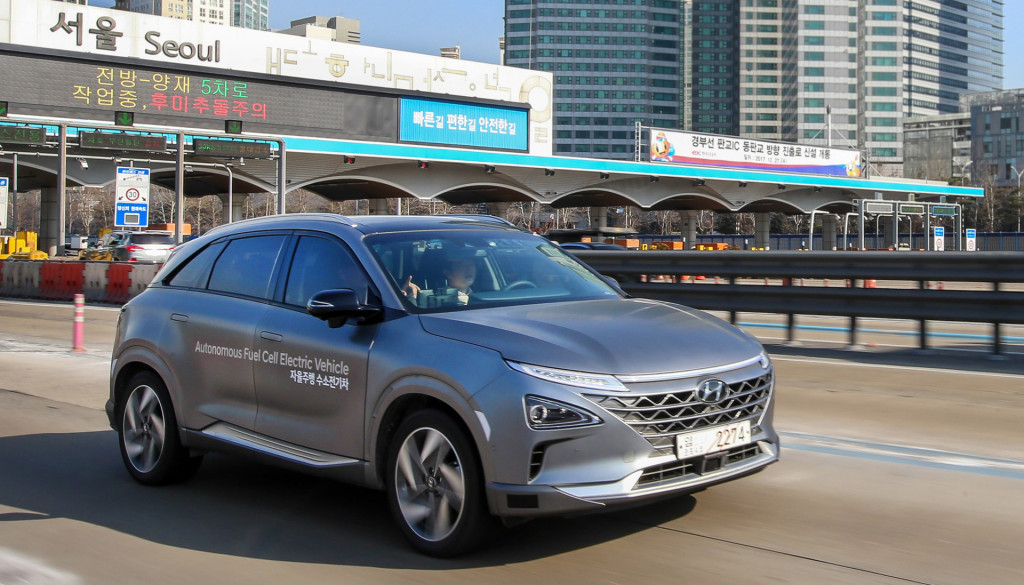Hyundai aims to have a Level 4 self-driving car on the market by 2021 and has demonstrated its progress in the field with five prototypes completing a 118-mile journey on their own. Three of the prototypes were Hyundai's new Nexo fuel cell car, making this the first demonstration of a self-driving car powered by a fuel cell.
The journey took place between Seoul and Pyeongchang in South Korea and covered mostly highways. However, there were also urban situations to handle, along with toll gates, tunnels and traffic circles.
Level 4 means a vehicle that can handle select conditions on its own but requires a driver to take back control when outside of the conditions. This is similar to Level 3 capability but Level 4 cars can also safely bring a car to a stop should the driver fail to take back control when required.
The final goal is a Level 5 car, which can handle all situations on its own. Hyundai expects to have a Level 5 car on the market around 2030.

Hyundai Nexo self-driving prototype
Self-driving cars process a high volume of data, which requires a lot of computing power. Hyundai says this can cause a substantial drain on an electric car's battery, which is why the automaker has chosen a fuel car car for this demonstration. The Nexo's range is 370 miles from a fill of hydrogen, though this will likely be shorter when the car is operating in self-driving mode.
The prototypes were also fitted with high-speed 5G connectivity, thus they closely represent Hyundai’s three visions for future mobility: connected mobility; freedom in mobility; and clean mobility.
Hyundai is working with U.S. firm Aurora Innovation to develop its self-driving technology. The Volkswagen Group is another automaker that has partnered with the self-driving technology firm started by former senior staff at the self-driving divisions of Alphabet, Tesla and Uber.
Hyundai says its Level 4 self-driving cars will be made available initially in “smart” cities, where various types of electronic data, such as map data or traffic light information, is available. This means that Hyundai's self-driving cars will likely require a certain level of infrastructure around them to operate, at least initially.
